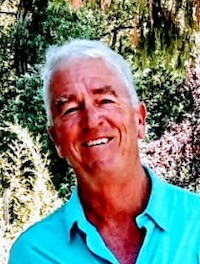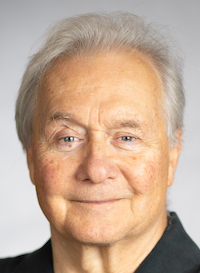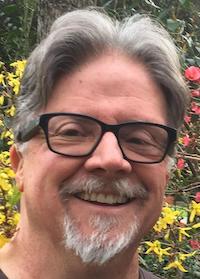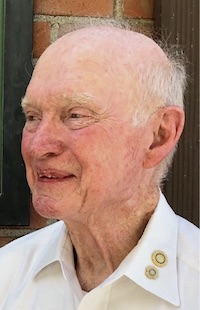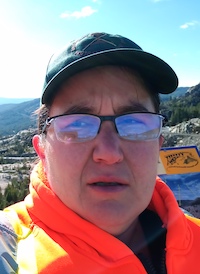Conference speakers
Trey Pitsenberger
The Lincoln Highway in California
Trey and his wife Monica own Adventures in California History, a media company focusing on the history of California and their adventures in re-discovering it. Adventures in California History operates a YouTube Channel and four Facebook pages: El Dorado County History, Placer County History, Georgetown Divide History, and Adventures in California History. Trey also operates the social media for the Donner Summit Historical Society’s Facebook Page. He currently serves as Vice-President of the Lincoln Highway Association and Vice-President and Historian for the California Chapter of the Lincoln Highway Association. Trey is also the editor of The Traveler newsletter, a quarterly publication of the California Chapter. Trey and his wife own The Golden Gecko Garden Center in Garden Valley, California.
James Dalessandro
The Destination — San Francisco’s 1915 Panama–Pacific Exposition
James is a poet, novelist, journalist, screenwriter, and filmmaker. After college in 1971, he hitchhiked from the East Coast to San Francisco to join the Beat Poets Movement. At the legendary City Lights Bookstore, he was told he was ten years too late. Undaunted, he co-founded the Santa Cruz Poetry Festival with Ken Kesey and Lawrence Ferlinghetti — the nation’s largest-ever poetry readings — creating what the latter stated was a “rebirth of American poetry.” He has authored four books, including national bestsellers 1906: A Novel (historical fiction) and Citizen Jane (true crime). His documentary on the great 1906 San Francisco Earthquake, The Damnedest Finest Ruins, won several film festival awards and can be viewed on the YouTube channel for KQED, the PBS station for San Francisco. For 20 years, he has been the principal lecturer on San Francisco history for Road Scholar, covering over two dozen subjects, including the 1915 Panama–Pacific International Exposition, the destination for the Lincoln Highway pioneers.
Jeff Ferreira-Pro
History of Folsom and the Gold Rush
Jeff has over 35 years of change management and leadership experience across multiple industries. Jeff was the project manager for Folsom’s Historic District revitalization project from 2005 to 2010, joined the board of the Folsom Historical Society in 2006, and became board president in 2014. Jeff also has had a leadership role in developing the Folsom Chinese Heritage Museum. He is currently helping the Folsom Historical Society reinvent itself as Folsom History, a 21st-century cultural resource for interpreting Folsom’s rich history through civic, creative, and cultural perspectives.
Dick Noonan
Snowbound: The City of San Francisco Train in the Blizzard of 1952
Dick has been interested in railroads since childhood. His parents supported his interest, including highway trips to watch trains in California and Arizona, and going with his mother to the Chicago Railroad Fair in the summer of 1948, via a round trip on the Atchison, Topeka and Santa Fe Railway. Over the years, he made additional friends who were also interested in watching and photographing railroad operations. One of them obtained tickets from his state assemblyman friend to the grand opening of the California State Railroad Museum on May 1, 1981. Dick thought volunteering at the museum would be interesting and joined its training class in September 1981, graduating from Docent Class #2 the following month. He volunteered inside the museum, guiding visitors and answering their questions during their visits to the Santa Fe Cochiti Dining Car, the Great Northern Railroad Railway Post Office Car, and Southern Pacific Cab Forward steam locomotive. In 1983, Dick volunteered in the first training for the museum’s operating interpretive railroad program: the Sacramento Southern Railroad. He helped design the museum’s Amtrak Interpretive Program, a written script tied to locations on the Amtrak route between Sacramento and Reno, Nevada. Dick’s professional career was in law enforcement, with the San Diego Police Department from 1959 to 1963 and the California Highway Patrol from 1964 to 1993.
Heather Kearns
The Transcontinental Railroad Tunnels at Donner Pass
Heather works at the California State Railroad Museum as a docent, the chief of track engineering, and the chief safety officer for track maintenance. She was born in Provo, Utah but has spent most of her life living in Sacramento. She grew up with an appreciation for camping and exploration, from forest hiking trails to desert hiking trails in the snow and summer. Sixteen years ago, to visit family and try something new, Heather decided to ride trains to Washington, D.C. In the first couple hours of the trip, she was treated to a California State Railroad Museum docent-narrated tour of the railroad’s history and the natural wonders along the route. At the end of that tour, they mentioned volunteer opportunities at the museum. Heather was intrigued, engaged, and downright drawn into the history and the wonder of the summit and railroading. She met and learned a lot about the people who volunteered for the museum’s Sacramento Southern Railroad and was enticed to participate further. Heather was named Railroad Docent of the Year in 2012, and for her efforts maintaining the railroad tracks, she was named one of the recipients of 2018 Enlightenment Awards by the Sacramento Historical Society. Heather points out that the railroad museum has a fantastic mural of Donner Summit, snow sheds, and the Chinese workers who dug the tunnels.
